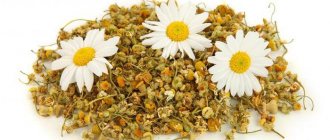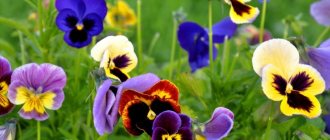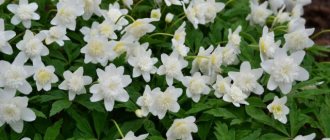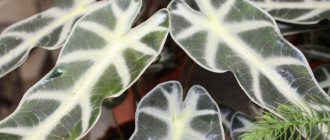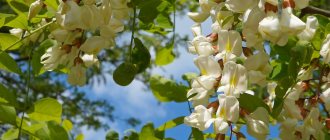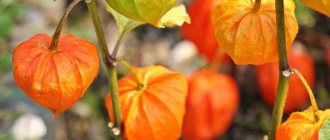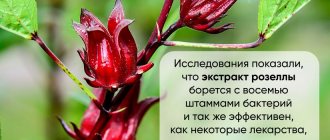The rose is a flower to which it is virtually impossible to remain indifferent. Refined petals combined with sharp thorns, a charming aroma, and an incredible range of colors turn this flower into a real queen among its kind [1].
Roses were first cultivated in ancient Rome. It is curious that it was grown in special gardens intended exclusively for plants that had not a decorative, but a very practical purpose: spices and medicinal herbs. In the 9th century, court physicians of the Carolingian dynasty treated the rose exclusively as a medicinal flower.
At the end of the 18th century, tea roses became known. It was during this period that flowers were brought to Europe from Asia, the aroma of which resembled the smell of tea. The so-called tea roses quickly gained recognition due to their medicinal properties and amazing beauty.
general characteristics
Content:
- general characteristics
- A little history and geography
- Botanical characteristics
- Types and varieties
- Chemical composition and calorie content
- Beneficial features
- Use in cooking
- How to pick tea roses correctly
- How to dry and store
- Making rose jam
- Making tea from tea rose petals
The beneficial properties of both ordinary and tea roses are primarily due to the presence of a high concentration of essential oil in the flowers. Rose oil claims to be one of the most valuable oils in the world. It is widely used in perfumery and cosmetology. At the same time, rose oil made in Bulgaria is considered to be of the highest quality. In this country there is the so-called Valley of Roses, where a special oilseed variety of this amazing flower is grown [2]. Interesting fact: to get just one gram of rose oil, you need to process more than thirty kilograms of petals.
Rose essential oil has a slight sedative effect, but at the same time sharpens cognitive abilities, relieves fatigue, and helps to concentrate. In addition, it increases the regenerative properties of the skin, helps relieve irritation and relieves inflammatory processes.
If we talk about using roses in cooking, the first thing we think of is rose jam. The healthy sweet, which is known under the romantic name “female revenge,” not only has a great taste, but also has medicinal properties. Queen of Flowers jam helps to cope with stomatitis, its use is indicated for sore throat. However, the use of roses in cooking is not at all limited to making jam. It is a raw material for the preparation of rose water, which is part of sherbet and other desserts. Specially processed rose petals are used to add flavor to baked goods, to decorate cakes, to add an unusual taste to sweets, and so on.
One of the most pressing questions that nutritionists are often asked is the following: which varieties of roses are edible? The answer to this question is quite simple. All flower varieties are conditionally edible, that is, those that can be eaten without negative health consequences. However, this does not mean at all that you can use flowers bought at the nearest store to make jam. Most roses that are grown for decorative purposes are treated with special chemicals that are designed to help them maintain their marketable appearance. Using these flowers to make desserts, jam, or for medicinal purposes is fraught with very unpleasant consequences. Therefore, when we talk about rose varieties that are used in medicine and cooking, we most often mean tea rose [3].
Tea rose is a special species, the beauty of which can strike the heart of even the most experienced gardeners. Its distinguishing feature is a very intense aroma and flowers of unusually large diameter, which can appear prohibitively large against the backdrop of thin stems and graceful leaves. The tea rose appeared in Europe relatively recently, although the history of human interaction with this plant goes back to the distant past.
The structure of a rose bush
A rose is a woody bush with many shoots. The bush does not have a dominant central shoot, but consists of several main shoots, on which, in turn, additional shoots are formed. The latter are especially important for once-flowering varieties, since they are the ones that bloom.
The shoots and stems of some varieties are not covered with thorns, contrary to popular belief, but with thorns, and the intensity of the “protective coating” varies from variety to variety. There can be many or few thorns. The shapes and structure of rose thorns, as well as their sizes, vary - from miniature to very impressive.
The leaves are odd-pinnate, that is, they always consist of an odd number of leaflets. The varieties that are grown today mainly have five pinnate leaves, and wild varieties, depending on the species, from 7 to 9, or even up to 15. The structure of a rose leaf is as follows: in the axil there is the base of the leaf - the lower part of the leaf, which provides it connection with the stem. The kidney is located there. It sprouts, which allows the bush to become more branched.
As for the structure of a rose flower, it consists of sepals, petals and carpels. The standard number of petals is five. In most cases, it is impossible to determine the number of double petals, since this is hampered by the frequently occurring intermediate forms, something between a petal and a stamen.
The so-called fruit is false. And only the grains inside it are true fruits. Botanists call them nuts.
A selection rose consists of two parts: the roots, up to the root collar, form a “rootstock”. Hybrid tea varieties are grafted onto the root collar. But in self-rooted roses, the main stem is a component of the rootstock.
The above-ground part of the rose bush, for which these plants are actually grown, is formed by a grafted variety. The rootstock is formed from selected types of wild roses (rose hips), which are propagated by seeds.
This method of reproduction was developed in the mid-19th century. simultaneously in two regions of Germany: Schleswig-Holstein and Saxony. Since then, mass cultivation of roses has been based on this technology. Most of the rootstock types still in use today were selected through selective breeding about 100 years ago. As a rule, rose lovers do not attach much importance to which variety to graft onto which rootstock, since the rootstock does not have much influence on the scion.
The aboveground and underground parts of a self-rooted rose are a single organism.
Some roses are propagated by cuttings or in sterile conditions, that is, in test tubes. This method is often used when growing ground cover and miniature roses, in particular potted roses, which today can be bought at any flower shop.
Rosehip, or wild rose, also belongs to its own roots. This plant reproduces by seeds. You can recognize it by the absence of grafting on the root collar.
If you remove the plant from the ground, you will see that the root system of roses grown by cuttings looks much more elegant. It has fewer skeletal roots and much more lobes. These delicate roots dry out very quickly in the air, so, as a rule, such roses are sold in pots or containers. The advantage of roses grown by cuttings is that without a rootstock, root shoots do not form.
Root system
The root system of a rose bush is taproot. In the case of vegetative propagation - fibrous. The skeleton is the largest of all the roots of the system, about 3 cm in diameter. The underground part of the rose is connected to the above-ground part by the root collar. As for the structure of the rose in terms of its root system, it is also diverse. In particular, the neck can reach sizes from 3 to 15 cm. This depends on the planting depth. The root collar is a very important part of the plant, and when planting it is necessary to take into account its location in the seedling.
This is interesting: Edible or poisonous umbrella mushrooms: varieties and description
Lobes are small adventitious roots that are located at the ends of the lateral roots. With their help, the bushes receive all the nutrients necessary for development and growth, as well as water.
Types of rose leaves
This plant has complex leaves that consist of several simple ones. Most often, a rose has 5 or 7 serrated leaves (round or elongated). But sometimes there are varieties with 9, 13 or 15 leaves.
Also, depending on the variety, the leaves can be glossy (shiny and highly shiny) or matte. In both cases, the surface of the leaf plate is smooth, only the wrinkled rose has tubercles.
As for color, rose leaves can also be of different shades. They are usually green (from light green to deep emerald) or bronze. There are also varieties with reddish and bluish leaves.
Types of rose fruits
False rose fruits are fleshy “nuts”. They come in different sizes and shapes. More often - round or oblong. Most roses have red fruits, but sometimes black (for example, Rosa spinosissima), yellow and orange berries are found.
What types of rose flowers are there?
The first thing that catches your eye is the color of the roses. Wild specimens have white, red, pink and yellow flowers. And varietal roses surprise with an incredible variety of shades. So far, breeders have not been able to breed only blue and blue roses. Apparently, this plant completely lacks blue pigment.
Depending on the color of the petals, roses are divided into several categories:
- monochromatic - all petals are the same color;
- bicolor - the inner and outer sides of the petals are painted in different colors;
- multi-colored - in one inflorescence there are flowers with different shades (often the tones change over time);
- mixed - the inside of the petal is painted in two or more shades;
- striped - each petal is painted in several colors in such a way that a striped pattern is obtained;
- painted - there are strokes, spots and other patterns on the silver petals.
Depending on the number of petals, roses are:
- simple - they have no more than 7 petals;
- semi-double – from 8 to 20 petals;
- terry - more than 20 petals.
The rose petals themselves are most often flat in shape, only in some hybrid tea and floribunda roses they are slightly bent (their ends are curled). In varietal roses you can sometimes find petals with a wavy or jagged edge.
Rose flower shape
The arrangement of the petals determines the shape of the bud. She may be:
Globular (deep cup-shaped) - the petals form a ball with a covered center, they are bent towards the center of the flower. This form is very rare.
Cupped - the petals form a bowl with an uncovered center, their edges are bent outward. In double flowers, the center can be square or round. The height of the bud is approximately equal to the width of its base. Cup-shaped flowers can be densely double, like modern varieties of English roses.
Flat - the petals are wide open and thereby form a flat bud, slightly concave in the center. This form can be found in all groups of roses.
Rosette-shaped - short petals arranged in rows form a flat flower, slightly concave in the middle. This form is characteristic of some antique roses.
Pompom - short petals (like rosette roses) form a round bud with a convex center. This form is found primarily in miniature roses, such as patio roses.
Cone-shaped (goblet-shaped) - the inner petals are folded and thereby form a cone. This form is characteristic of many hybrid tea roses.
This is interesting: How to properly care for citrus indoor plants
A little history and geography
The homeland of the tea rose is China. This flower came to Europe only in the 19th century. It was brought from China by ships of the East India Company, which were called tea clippers, since their main purpose was to deliver tea to the Old World.
English gardeners, captivated by the beauty of the flower, began to actively cross the tea rose with local species. Their goal was to obtain hybrids that could easily withstand the cold European climate and temperature changes. As a result, many so-called hybrid tea varieties were developed, which were also included in the species Tea Rose. At the same time, the plant, despite all the efforts of breeders, still remains unusually sensitive to heat, which is why it is rarely grown in open ground.
There are three versions as to why the tea rose got its name. The first theory relates this to the fact that the flower seedlings were transported on ships that delivered tea to Europe. The second version sees in the aroma of this plant a resemblance to the smell of freshly brewed elite tea. Finally, the third, most romantic theory says that the half-opened flower resembles a Chinese tea bowl in its outline.
Tea rose in Asia is found even in the wild: in the mixed forests of China, Thailand, Vietnam and Myanmar. There are four varieties of wildflower, but all of them are endangered.
Notes
- Walde A., Hofmann JB
Lateinisches etymologisches Wörterbuch. - Heidelberg: Carl Winter's Universitätsbuchhandlung, 1938. - T. 2. - S. 443. - Frisk H.
Griechisches etymologisches Wörterbuch. - Heidelberg: Carl Winter's Universitätsbuchhandlung, 1960. - T. 2. - S. 660-661. - ↑
- ↑ Plant life // Volume 5. Part 2. Flowering plants / Under. ed. Takhtadzhyan A.L. - M.: Education, 1981. - 512 p.
- ↑
- ↑
- Saakov G., Rieksta D. A.
Roses. - Riga: Znatne, 1973. - 359 p. - ↑
- ↑ Pisarev E.
Roses. - M.: Eksmo, 2009. - 48 p. — ISBN 978-5-699-29017-8. - ↑
- ↑
- ↑
- Melnichenko T. A.
Merchandising of perfumery and cosmetic products (for secondary specialized educational institutions). - Rostov: Phoenix, 2002. — P. 19. - ↑
- Mantrova E. Z. Winter
hardiness of roses depending on the methods of fertilizing. - M.: Publishing house. Moscow University, 1984. - 142 p. — 35,500 copies. - ↑
- Sokolov N.
// Roses in the Caucasus. - Stavropol: Stavropol Book Publishing House, 1974. - 64 p. - ↑
- Medvedev I. A.
Optimization of methods of propagation and protection of roses from pests in the conditions of Moscow and the Moscow region. — Dissertation of a candidate of agricultural sciences. - Moscow, 2006.
Botanical characteristics
The tea rose can be either low-growing, from half a meter in height, or climbing, reaching more than two meters. The stems of the flower are very thin, but at the same time strong. The leaves of most varieties are oval in shape and also have a noble dark green hue.
Tea rose flowers may appear disproportionately large against the background of its stems and leaves. The shape of the buds varies among different varieties: they can be round, elongated or slightly pointed. Each tea rose flower has about sixty petals, which is why they are so incredibly lush.
The color range of tea roses is incredibly wide – this is reflected in the efforts of breeders. However, a soft pink shade with peach and beige notes is considered classic. When the flower fully opens, a yellow core is visible in the middle.
Care instructions
Roses are available year-round and are sold either as seeds or as cuttings.
If you plan to grow them in a pot, they can be planted at any time. Plants need to be fed regularly, and the amount of feeding will depend on the type of soil in which they are planted. Pruning is also important and should be done after mid-February during an extended frost-free period. Flowers can become infected with a number of diseases, most of which are caused by fungi. Powdery mold appears as a grayish-white coating on the surface of young leaves and stems. Black spot fungus appears as noticeable dark spots on the leaves and causes them to fall off.
Rust is also a common disease of roses. Aphids are a common insect pest on leaves and young stems.
Types and varieties
It should be noted that modern varieties of tea roses are very different from their ancestors. As a result of the efforts made by breeders, the flowers have become a little more resistant to climatic conditions: their branches have become thicker and tougher, and their leaves have become larger and leatherier. The shade of the buds also varies. Modern tea roses can be not only pink or yellow, but also white, red, and orange. However, most varieties of tea rose have a characteristic pearly hue.
How intense the aroma of a flower is also depends on the variety. Some have an unusually strong scent, while other varieties have a very light, almost imperceptible aroma.
As a rule, only the most fragrant varieties of tea rose are used in cooking. Many of them were bred by British breeder David Austin [4].
Alan Titchmarsh. This rose has very large double flowers with pink-lilac petals. It has an incredibly long flowering period. The peculiarity of this flower is a very sweet and rich aroma, which contains light citrus notes. Experts say that the scent of this rose is reminiscent of the aroma of those ancient Chinese varieties that once arrived in Europe on tea clippers. Most often, this variety is used for making liqueurs and jams.
Christopher Marlowe. This rose has pink-orange flowers, which are collected in lush inflorescences. It is noteworthy that they do not fade in the sun, maintaining their brightness to the end. Their aroma is very intense, reminiscent of tea with citrus notes.
Abraham Darby. This is a chameleon rose. Its flowers are very large, peach-apricot in color, and have the property of turning pink if the air temperature drops. The buds have an intense fruity aroma with notes of strawberry.
Gertrude Jekyll. The flowers have petals of a rich pink hue with an incredibly strong scent. As a rule, this variety is used for making jam. It is also a raw material for the production of perfumes.
Gentle Hermione. The flowers are distinguished by their delicate pink hue and extraordinary delicacy. They are actually transparent, but this fragility is deceptive: in fact, even rainfall cannot damage them. Their aroma is very rich, with a barely noticeable presence of myrrh.
Blue moon. These are incredibly large flowers of a soft lilac color with a silvery tint. This variety is used for making liqueurs [5].
Plant morphology
Roses are shrubs whose stems, as a rule, are abundantly armed with thorns or thorns of various shapes and sizes. Wild beauties flowers typically have five petals, while human-cultivated plants often double this number (meaning they have multiple sets of petals).
Pink flowers range in size from tiny miniatures measuring 1.25 cm (0.5 in) in diameter to hybrid specimens measuring over 17.5 cm (7 in) across. The rosebud is fleshy and sometimes edible, and the berry fruit usually ranges in color from red to orange.
Morphological description of roses for children:
- Plants include annuals, perennial herbs, shrubs or small trees.
- Leaves are alternate or opposite, simple or compound, often armed with spines, usually with stipules.
- Fruits - various types: seeds, multi-nuts, boxes.
The unifying features of the family are full, perfect, actinomorphic flowers with a pronounced cup-shaped hypothene and many straightened stamens. The perianth and stamens are attached to the edge of the floral tube (hypophya). The small flowers have readily available nectar on the honey disc, and insects collect abundant pollen.
Botanical description of rose flower:
- calix - 5 sepals;
- corolla - 5 free petals;
- male reproductive organ - usually numerous stamens;
- female reproductive organ - pistil, one or many; if one, then a composite one, consisting of 2-5 fruits; if there are several, then simple ones. Ovary higher or lower.
The morphology of the fruit is very diverse: in rose hips it is a fleshy hypanthium surrounding numerous nuts, in strawberries it is an enlarged fleshy vessel covered with fruitlets, in blackberries it is an aggregate fruit with an elongated vessel bearing numerous seeds. Rosaceae fruits also include apples and almond seeds.
Chemical composition and calorie content
The energy value of tea rose petals is practically zero. It is only 5 kcal per 100 g of product. However, the fragrant buds are a real storehouse of useful substances.
Thus, tea rose petals contain vitamin C, which strengthens the immune system and regulates blood count; vitamin K, which normalizes blood clotting and helps prevent osteoporosis; B vitamins, which are responsible for energy metabolism in the body, increase resistance to viruses and bacteria, and also support the functioning of the digestive system [6].
If we talk about macro- and microelements, then the largest (and best!) part of Mendeleev’s periodic table is represented in the petals of the tea rose. They contain calcium, which is responsible for the condition of bone and dental tissue; potassium, which normalizes the activity of the heart muscle; copper, which helps cope with depressive disorders and chronic fatigue syndrome; as well as iodine, which increases the elasticity of the walls of blood vessels and normalizes the functioning of the thyroid gland. Rose petals also contain iron, which is involved in the synthesis of hemoglobin; Magnesium has a vasodilating effect, which also helps cope with stress; and selenium, which is known for its antitumor properties and takes part in the synthesis of a number of enzymes and hormones [7].
In addition, the chemical composition of tea rose petals contains zinc, phosphorus, manganese, molybdenum, vanadium and silicon. Zinc helps maintain healthy hair and nails; it is also necessary for the body to properly absorb B vitamins. Phosphorus increases cognitive abilities, participates in energy metabolism, and is responsible for the condition of muscles. Manganese takes part in the synthesis of cholesterol and is also a preventative against fatty liver and the development of diabetes. Vanadium normalizes the blood formula and also helps reduce the level of “bad” cholesterol. Molybdenum is an effective means for preventing the development of gout, as well as a participant in the synthesis of a number of vitamins and enzymes.
Also, the chemical composition of rose petals contains citric and malic acids, tannins, resins and, of course, essential oil, which has an incredibly large list of beneficial properties [8]. It can stimulate the immune system and improve the condition of the endocrine glands. Also, essential oil normalizes the state of the gastrointestinal tract, eliminating the manifestations of dysbacteriosis.
It is also useful for nervous stress, because it helps to calm down and relax, prevents migraines and cerebral vascular spasms [9].
Beneficial features
The unique chemical composition of tea rose petals gives them a wide range of beneficial properties. Here are just a few of them:
- Increasing the overall resistance of the body, its ability to resist bacteria and viruses.
- Normalization of the functioning of the gastrointestinal tract. Remedies based on rose petals not only reduce inflammatory processes, but even promote the healing of ulcers in the gastrointestinal tract [10]. They help get rid of “lazy” bowel syndrome and improve liver health [11]. A slight choleretic effect is also noted.
- Help in the fight against insomnia, relief from nervous tension. A bath with rose petals has a relaxing effect and relieves muscle spasms. If you find yourself in a situation where you are forced to constantly exist in a mode of intellectual and emotional overload, periodically relieve yourself by inhaling the aroma of rose oil.
- Treatment of colds, relief of inflammatory processes in the respiratory tract and oral cavity. Rose petal jam is recommended for sore throat, pharyngitis, periodontitis and stomatitis.
- Improving the condition of skin and hair. Rose petals have bactericidal properties, promoting wound healing and getting rid of acne. When using preparations based on this plant material, the skin becomes velvety, becomes more tender, and its tone improves. In case of allergies or mosquito bites, it is enough to apply fresh pink petals to the itchy places, after kneading them in your fingers - the burning and irritation will disappear.
- Normalization of the monthly cycle in women. Rose petal remedies are useful for heavy and painful periods.
- Removing excess fluid from the body, which helps relieve the kidneys. This way you can get rid of edema [12][13].
Not only rose petals, but even their aroma have medicinal properties. Breathing rose essential oil is indicated for angina pectoris and a tendency to heart disease. In this case, you can wear a ceramic medallion around your neck, in which a few drops of rose oil are placed.
Also, inhaling rose oil helps relieve symptoms of vegetative-vascular dystonia: dizziness, sudden attacks of weakness and nausea, panic attacks. To do this, you need to take slow and long breaths, inhaling healing ethereal vapors as deeply as possible.
We all know “grandmother’s” recipe in case of upper respiratory tract diseases - breathe over a pan of boiled potatoes in their jackets. However, few people know that for bronchitis and tracheitis, steam inhalations can also be done with rose petals.
Rose water, an infusion of rose petals, helps with neuralgia [14]. It is applied to the area of the skin where the person is experiencing pain. Also, compresses with rose water are useful for radiculitis and osteochondrosis.
Use in cooking
Tea rose petals have also been in demand in cooking since ancient times. There are a huge number of ways to use them. Fresh petals are used to decorate cakes and desserts. They are dried, soaked, and used to make jam, honey, as well as liqueurs and tinctures.
Candied rose petals are especially popular. They can act as an independent dessert, as well as an exquisite decoration for other dishes.
Rose petals are also added to black tea to give it a piquant aroma. In some countries, tea rose is used as a raw material for an independent drink. It has a pleasant, refreshing taste, as well as a very specific tart aroma.
And finally, we have all been familiar with rose petal jam since childhood - an exquisite delicacy that can satisfy the most demanding taste. Also, jelly and marmalade are prepared from tea rose buds, and cottage cheese and yoghurt are flavored with rose water.
True culinary professionals know that using rose water and rose petals is not as easy as it might seem. It is enough to just slightly overdo it with the essential oil of the queen of flowers, and the dish will turn into something with a suffocating aroma, reminiscent of expired perfume.
You need to consider what ingredients tea rose is combined with:
- Rose water adds flavor to dishes high in chocolate, coffee and citrus zest. It also goes well with bitter spices, in particular cloves. In Spain, a very popular sweet rose water soup is ajoblanco, to which honey and ground almonds are added and served with grapes and melon.
- Roses with almonds are another popular combination. Thus, in France, Orgeat almond-rose syrup, which tastes similar to amaretto, is widely available on store shelves. It is used to make cocktails. And in Iran, almond slices, soaked in rose water and rolled in sugar, are one of the main holiday delicacies.
- Melon pulp in rose syrup is a popular delicacy in India. Before serving, the delicacy is kept in the refrigerator for some time.
- The bitter aroma of coffee will partially dampen the sugary quality of the rose, so in the East, Turkish delight prepared with rose water is often served with this invigorating drink.
- A few drops of rose water can be added to apple desserts. Their taste will become more intense, and the aroma will sparkle in a new way.
- Roses and cucumbers are a strange combination, but nevertheless very popular in the UK. They prepare a cocktail with sliced cucumbers and rose water. It is believed that this is a tribute to the traditions of the Victorian era, when sandwiches with slices of fresh cucumbers were served at garden picnics.
- A few drops of rose water added to lemonade will allow this drink to sparkle with new colors.
- Chocolate candies with pink fudge, chocolate ice cream in rose water sauce are another very winning combination.
- Cardamom, pistachios and rose water are a combination that will turn even an ordinary ice cream into an exquisite dessert that can satisfy even the most picky gourmet.
How to pick tea roses correctly
It is best to collect tea roses yourself. This is done at a time when the bud has not yet fully opened, in other words, the golden core should not be visible.
Petals are collected only in dry weather. There should be no dew or raindrops on the petals. At the same time, it is best to go “hunting” for tea roses at dawn: at this time its aroma is most intense.
The correct way to harvest a tea rose is as follows: holding the flower, cut off the stem at a distance of at least half a centimeter from the base of the bud.
Notes
- Walde A., Hofmann JB
Lateinisches etymologisches Wörterbuch. - Heidelberg: Carl Winter's Universitätsbuchhandlung, 1938. - T. 2. - S. 443. - Frisk H.
Griechisches etymologisches Wörterbuch. - Heidelberg: Carl Winter's Universitätsbuchhandlung, 1960. - T. 2. - S. 660-661. - ↑
- ↑ Plant life // Volume 5. Part 2. Flowering plants / Under. ed. Takhtadzhyan A.L. - M.: Education, 1981. - 512 p.
- ↑
- ↑
- Saakov G., Rieksta D. A.
Roses. - Riga: Znatne, 1973. - 359 p. - ↑
- ↑ Pisarev E.
Roses. - M.: Eksmo, 2009. - 48 p. — ISBN 978-5-699-29017-8. - ↑
- ↑
- ↑
- Melnichenko T. A.
Merchandising of perfumery and cosmetic products (for secondary specialized educational institutions). - Rostov: Phoenix, 2002. — P. 19. - ↑
- Mantrova E. Z. Winter
hardiness of roses depending on the methods of fertilizing. - M.: Publishing house. Moscow University, 1984. - 142 p. — 35,500 copies. - ↑
- Sokolov N.
// Roses in the Caucasus. - Stavropol: Stavropol Book Publishing House, 1974. - 64 p. - ↑
- Medvedev I. A.
Optimization of methods of propagation and protection of roses from pests in the conditions of Moscow and the Moscow region. — Dissertation of a candidate of agricultural sciences. - Moscow, 2006.
How to dry and store
In the event that there is no need to use fresh tea rose buds, they are quickly dried so that they do not lose their valuable essential oil.
The most convenient option is to disassemble the bud into petals, which then need to be laid out on paper in a thin layer so that they do not touch each other. After this, the rose must be covered with another sheet of paper. It will dry completely in 3-4 days.
Immediately after the petals dry, they are placed in a jar and sealed tightly. The duration of their storage should not exceed one year.
Some varieties
There are several main classes of garden representatives. The best known and most popular class are the hybrid teas, which account for the majority of flowers grown in greenhouses and gardens and sold in florist shops. They include a full range of shades and have large, symmetrical flowers.
Polyanthas are very hardy flowers that produce dense clusters of tiny buds. Floribunda roses are also hardy hybrids, the result of crossing hybrid teas with polyanthas. Grandiflora flowers are relatively new hybrids obtained by crossing hybrid tea and pink roses. Grandifloras produce flowers that grow on tall, hardy shrubs.
Other classes of modern roses have recently become popular:
- climbing, whose thin stems can climb onto the trellis;
- shrubs that grow into large bushes;
- miniatures, which are plants that bear tiny flowers.
Making rose jam
To prepare fragrant rose jam, you will need the following ingredients: 600 g of sugar, 300 g of fresh rose petals, and 6 glasses of water.
Sort the petals and rinse. Dry them on a towel, then place them in a bowl and sprinkle with two tablespoons of sugar.
Rub the petals thoroughly with your hands and drain the juice into another bowl.
Bring the water to a boil and add the remaining sugar. Mix thoroughly and, without stopping stirring, cook for two minutes. After this, strain and cool.
Pour the prepared syrup over the petals. Bring to a boil over high heat. Then reduce the heat to low and simmer for six minutes, stirring and skimming off the foam.
Add the juice of rose petals to the jam and simmer for another quarter of an hour until the syrup thickens.
